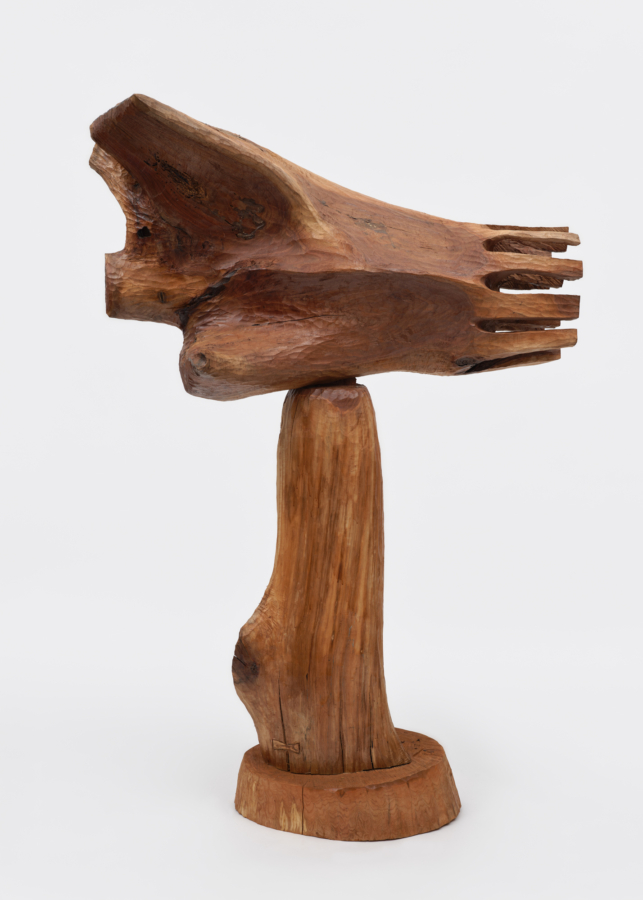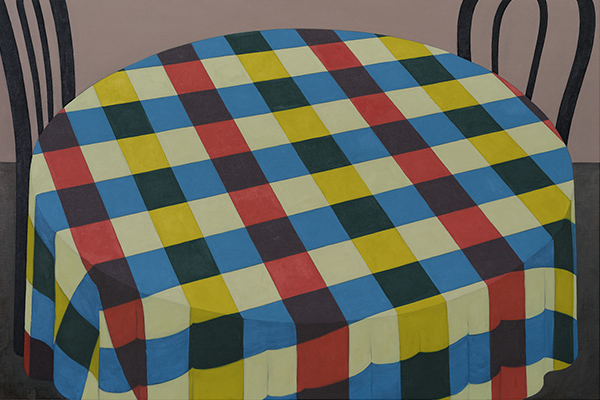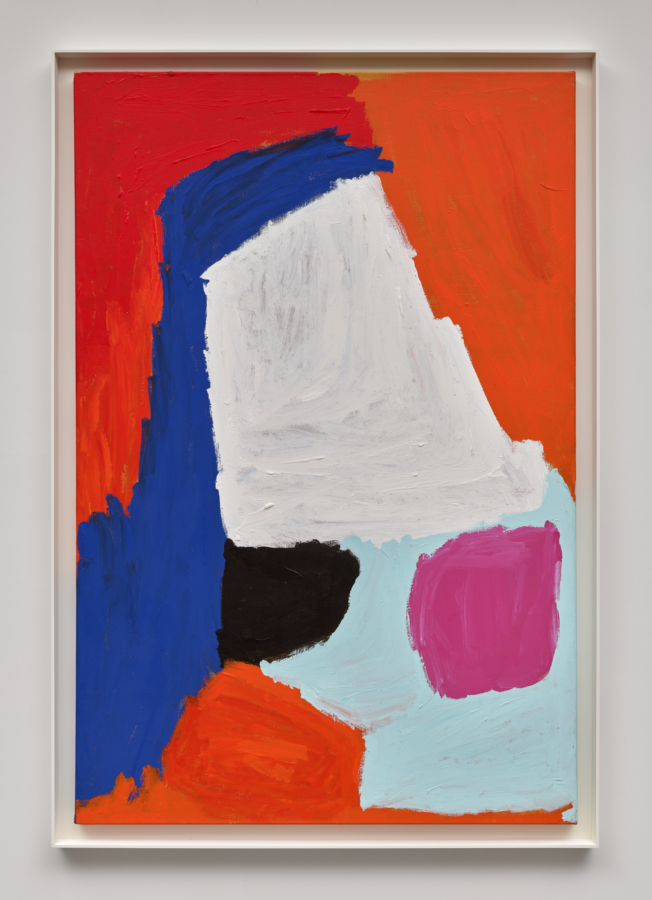1987
Bronx Museum of the Arts
This catalog documents The Bronx Museum of the Arts’ second exhibition that seeks to capture the extent to which computers are being utilized as creative tools by visual artists. All of the artists selected for this exhibition employ the computer at some point in the creative process, be it at the moment of conceptualization of the art object, as in the work of Edgar Buonagurio and David Em; as an organizer and drone to help sort out and calculate the complex polygonal forms that comprise the sculpture of Rob Fisher and Raymon Masters; or as the primary tool of creation, as in the case of Manfred Mohr, an artist whose “physical” contact with the final work is minimal. Mohr writes his own software programs and outputs his paintings with a plotter he helped design and build, thus providing for us one of the most unorthodox examples of the introduction of the computer into the traditional process of painting.
The exhibition divides the exploration of these artists into the following groups, each of which share similar interests. There are those artists whose work is created exclusively by the use of computer software and whose output can only be captured photographically, usually in a Cibachrome print, and those who explore the effects of printing their designs on paper or canvas with plotters, like Mark Wilson, Colette and Charles Bangert, and Eudice Feder among others. The patterns and designs of Ms. Feder’s work are so subtle that they can only be appreciated by the viewer in person.
As with the monochrome paintings of some of the Minimalists, they resist photomechanical reproduction. The final products of artists like Norman Zammitt, Jeremy Gardiner, Carter Hodgkin, and Mimi Smith more closely resemble traditional painting but their conceptual path has been considerably altered and redefined by the use of a computer. The single largest section of this exhibition, with twenty-four artists represented, illustrates the pervasive presence of the computer in the field of video art. The natural affinity between these two electronic mediums clearly exists, but the range of applications may be surprising for those accustomed to rock videos and soft-drink commercials. Artists like Peer Bode confront the viewer with the fundamentals of video and computers, revealing the “binary innards” of these machines, while artists like Maria Manhattan in Nancy Reagan Takes The Subway demonstrates that “high tech” equipment is not always necessary to make a point.
The last group consists of installation artists whose works involve the placement of computers in the gallery. The most ambitious of these pieces is Margot Lovejoy’s Azimuth XX–The Logic Stage, which she describes as “the struggle to control, represent, and construct meaning in the ‘gap between art and life’ .”
This exhibition does not attempt to trace the history of some of the early pioneer artists and their adventures in the hallowed halls of science and technology. Its concern with the most recent years enables the professional and lay public to catch a glimpse of the rapidly changing nature of the interaction between artist and machine. It also draws a line between fine arts and applied or commercial arts. Some of the most technically sophisticated work in computer graphics today is clearly being done by artists working in places like LucasFilms Ltd., Wavefront, and Magi, and their work, seen annually at the national SIGGRAPH convention, is a marvel of the power of commerce to put this new creative tool to work. As, however, The Bronx Museum is not a science museum, it does not wish to venture too far into the applied aspects of this field. While we do not preclude future exhibitions that may examine the computer graphics field from a design perspective, the goal of The Second Emerging Expression Biennial is squarely on the side of aesthetics. Our objectives are to unearth and document the creative ways in which artists are using the computer, and to give critics, curators, art historians, and the artists themselves the opportunity to see what is transpiring across the country.
Norman Zammitt uses the computer as a tool to help him calculate and track the vast numbers of colors required to create his large-format acrylic paintings. Some years ago, Zammitt wrote computer programs to help him visualize the relationships between hues as they exist in paint. He started using a computer to notate his formulas for mixing pigments, finding that it saved him hours of laborious calculations (as witnessed in his early notebooks), and eventually developed programs that help balance the finite gradations that determine the exact relationships in intensity and hue between a color and its neighboring color. Caly-Forny-Ay (1987), is an example of a painting that has several hundred formulas and illustrates Zammitt’s interest in color as a means of spiritual expression. An interest in color and color changes is one of the strongest elements found in computer art. Theoretically, sixteen million colors can now be reproduced exactly with a computer system. Colors and color transitions that were once difficult to visualize are now being created easily with color maps by artists using computers. However, Zammitt doesn’t need the color map; he is able to capture in paint the luminosity associated with color seen on a monitor without using the screen as a prompter.
Some art critics and theorists might ask questions such as, “Why is it important to document these phenomena? Isn’t it a passing fad? Couldn’t one just as readily organize an exhibition of all artists who use toaster ovens, or all artists who drive cars? ” The answers lie in the fact that the computer is not just a simple machine with only one function. Through significant technological advances over the past three decades it has “evolved” to now have greater capabilities to handle an increasingly complex array of tasks, which vary with the user. As these task-handling capabilities spilled over into areas which concern visual artists, i.e., the manipulation of color, light, and sound, a natural curiosity developed. The possibility of controlling the fundamental elements of creativity tempt many artists to put the computer and its relentless sequential logic to use in novel and undreamed-of ways. That the computer as a creative tool is worth watching is made evident by the increasing number of artists using them and the diversity of the products they create.
One interesting sidebar to this phenomenon is the development of paint systems; computers which either through software or design allow the user to draw or paint with the computer. The TV screen (or monitor) of such a paint system will typically contain two borders; one with either patterns or color bands that the user can select and another where the user can choose the “tools” for painting the colors or patterns. Usually the tools are electronic symbols for traditional paint tools, i.e., a brush or pen with varying line thicknesses or an airbrush. These icons facilitate the creation of basic shapes like circles, squares, rectangles and polygons. The user communicates with the computer through an electronic tablet with a “pen” or “mouse” attached. The pen or mouse senses the movement of the user’s hand and translates it onto the digitized screen where a cursor mimics the movement. Even on the most expensive systems it is not as natural to draw a line with a computer as it is to take pencil to paper. However, artists have always recognized that every medium has its limitations and strengths and the computer is no different. Discovering the machine’s limitations and finding ways around them is half the fun for several of these artists.
– Luis R. Cancel, Executive Director/Curator
Just a few short years ago computer systems capable of providing these paint effects would have costhundreds of thousands of dollars and would have been totally beyond the reach of most artists (David Em being one of the early exceptions as he was allowed access to the large computers at the Jet Propulsion Laboratories and the Imaging software of Jim Blinn). Today the cost of this sophisticated technology is tumbling, and it is being adapted to microcomputer systems through a combination of expanding computer memories and specialized software. This allows artists like Laurence Gartell to experiment with paint systems on microcomputers. Gartell’s more recent work is especially noteworthy since he transcends one of the limitations of paint systems — the “signature” of the software. All of the painting programs in commercial use today have particular abilities and limitations, which become apparent if the user/artist stays within the confines of the program. Anyone sufficiently familiar with computer paint systems can very often say, “That was done with a Perkin-Elmer 3220 or a Quantel Paintbox,” or,” The artist used software like Time Arts EaselPaint or Mac Paint.” The jurors of this exhibition have been guided by the principle that the use of simple computer “tricks” would not be sufficient to warrant inclusion in the exhibition.
All of the artists selected for this exhibition are pushing the boundaries of media, going that extra mile, and helping to establish a path where technology and art can converge in the creation of new tools for human expression. It is The Bronx Museum’s hope that biennial exhibitions of this kind here and at other museums will help to encourage that evolution and bring it to the public’s attention.



